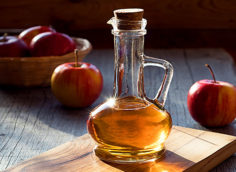Think of the Children!
I guess it's nice that people nowadays seem to care about what they eat; that they're worried about nutrition and chemicals and toxins and safety and cancer and bunnies and the children, oh yes, the children, because tomorrow's their future.
But good God, how the hell did people get so sanctimonious and high horsey about it? Most of them have never picked up a real science book or taken a science course in college, but yet they feel cock-sure in spreading falsehoods and misconceptions about even the most basic facts of nutrition, including, most annoyingly, "artificial chemicals."
I'm going to say this as delicately as I know how. Get your head out of your dumb but lovely science-ass. You've no doubt heard the expression, "A little bit of knowledge is a dangerous thing"? Well, most of the people who freely express their nutrition views on Facebook and Instagram are dangerous: North Korean leader, blow-up-the-world-because-you-made-fun-of-his-haircut, dangerous.
Case in point, they rail against alleged "toxins" and "artificial" chemicals. They read a list of food ingredients and shake their heads, muttering about the evil food manufacturers and making jokes about all the long, hard-to-pronounce words, and then sniff and assert that "chemicals are bad for you."
Screw 'em. Everything is made of chemicals. Take a look at the following list of ingredients:

What a carcinogenic nightmare! Why, you can spring a tumor or two just by reading it. But guess what? That's what it would look like if a "natural" coffee bean came with an ingredient list!
Here's another one. It's the ingredients in an "all-natural" strawberry:

Oh, the horrors! But contrast that with the ingredients in those little Valentine's Day "love hearts," you know, the ones that have messages like, "Hugs," or hopefully, "Do Me," written on them? They're hardly a health food, but they only have 14 ingredients, several of which are also commonly found in fruits like sucrose, stearic acid, amylose, and amylopectin. One of the ingredients is often curcumin, the super nutrient of the modern era.
The point is this: The notion that there's a difference between natural chemicals like those found in plants and the chemicals produced in a lab is bunk. Lab-made chemicals aren't necessarily bad, and the nutrition dilettantes need to get it in their airy heads that chemicals are the building blocks of the physical world.
Australian chemistry teacher James Kennedy, the man who came up with the "natural food" ingredients lists above, accurately explains that, "There's a tendency for advertisers to use the words 'pure' and 'simple' to describe 'natural' products when they couldn't be more wrong."
He added, as explanation of why he produced his natural-food ingredients lists, "...I wanted to erode the fear that many people have of 'chemicals' and demonstrate that nature evolves compounds, mechanisms and structure far more complicated and unpredictable than anything we can produce in labs."
Good job, Jimmy.
Another thing to keep in mind while frowning over ingredients lists and palpating your torso for tumors is dosage. Chemicals are often measured in parts per million (PPM) or parts per billion (PPB). One part per billion is equivalent to one piece of lint from a gym sock floating around in your average 24-Hour Fitness center. Stuff that's truly dangerous in large amounts isn't going to be a problem when we're talking about PPM or PPB.
We need manmade chemicals. The difference between "natural" and "artificial" is often just a matter of perspective. After all, natural isn't always good for you and the manmade stuff isn't always dangerous.
That being said, it remains a good idea to avoid, whenever you can, "Frankenfoods." Let your suspicion antennae elevate when the item you're looking at can't readily be identified as food. While it may not be harmful, it's unlikely to be nutritious to any significant degree and may lack fiber and contain crazy amounts of sugar.
After all, scientists can get carried away sometimes, hashtag damn near any movie nowadays featuring a post-apocalyptic, dystopian world.
- Specter D. What it would look like if your banana came with an ingredient list. Business Insider. January 20, 2014.
- Oxenham S Everything is Made of Chemicals. Big Think. August 1, 2014.





